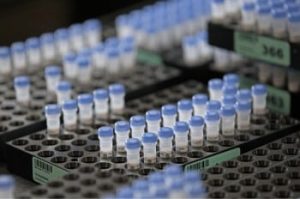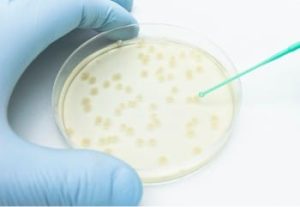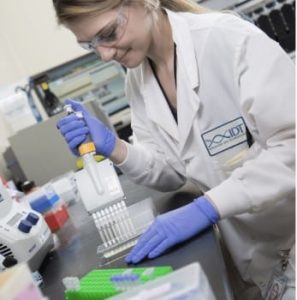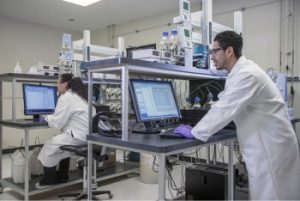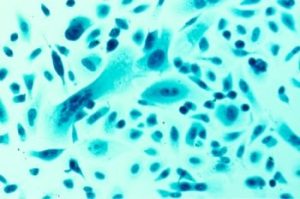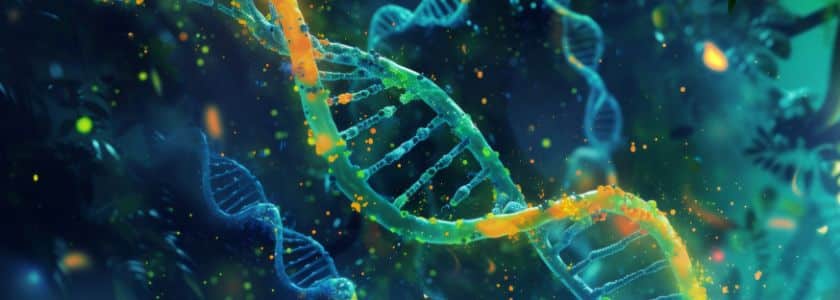The Takeaway: Codon optimization is a molecular biology technique that can improve the efficiency of gene expression in a heterologous host organism. In molecular biology, a codon is a sequence of three nucleotides in DNA or RNA that corresponds to a specific amino acid or signals the end of protein synthesis. Let’s explore this in more detail.
What is codon optimization?
Different organisms have different preferences for codon usage, meaning they may have preferred codons for the same amino acid. When a gene from one organism is introduced into another, the codon usage of the gene may not match the codon usage preferences of the host organism. This mismatch can lead to inefficient translation of the gene into protein, reducing the expression levels or even leading to the production of non-functional proteins.
Codon optimization involves strategically modifying the nucleotide sequence of a gene to replace rare or less-favored codons with more frequently used codons in the host organism. By doing so, the efficiency of translation is increased, resulting in higher levels of protein expression. This technique is commonly used in biotechnology and synthetic biology to enhance the production of recombinant proteins in various host organisms, such as bacteria, yeast, and mammalian cells.
What are techniques for codon optimization?
There are several techniques commonly used for codon optimization:
Codon usage tables analysis: This technique involves analyzing the codon preferences of the target organism by examining its genomic sequence. Codon usage tables provide information about the frequency of each codon within the organism's genome. By identifying the preferred codons, researchers can design synthetic genes with optimized codon preference for the specific host organism.
Codon Adaptation Index (CAI): CAI is a quantitative measure used to evaluate the similarity between the codon usage of a gene and the codon preference of the target organism. Genes with a higher CAI value are more likely to be efficiently expressed in the host organism. Codon optimization involves modifying the nucleotide sequence of a gene to increase its CAI score and improve expression levels.
Synonymous codon substitution: In this technique, synonymous codons (codons that encode the same amino acid) are strategically substituted to match the preferred codon usage of the target organism. Rare or less-favored codons are replaced with more frequently used codons without altering the amino acid sequence of the protein. This approach aims to enhance translation efficiency and protein expression levels.
Codon pair bias analysis: Codon pair bias refers to the non-random pairing of codons within coding sequences. Some codon pairs may occur more frequently than others, influencing translation efficiency. Codon pair bias analysis involves identifying and optimizing codon pairs that are commonly used in the target organism to improve translational efficiency.
Gene synthesis and de novo design: Advances in gene synthesis technology enable researchers to design and synthesize custom DNA sequences with optimized codon usage for specific host organisms. By using computational algorithms and bioinformatics tools, researchers can design synthetic genes with improved expression characteristics, including codon optimization.
These techniques for codon optimization aim to enhance translational efficiency and protein expression levels in heterologous host organisms, thereby facilitating the production of recombinant proteins for various biotechnological applications.
IDT’s Codon Optimization Tool
Integrated DNA Technologies (IDT) provides a helpful tool called the Codon Optimization Tool, which is available on our website. This tool is designed to assist researchers in optimizing the nucleotide sequence of genes for expression in a variety of host organisms.
Here's an overview of the features and functionalities of the Codon Optimization Tool from IDT:
- User-friendly interface: The tool’s user-friendly interface allows researchers to input their nucleotide sequence of interest. This sequence could be a gene coding region for a protein that they wish to express in a particular host organism.
- Selection of target organism: Users can specify the target organism for which they want to optimize the codon usage. Different organisms have different preferences for codon usage, so this step is crucial for achieving optimal expression levels.
- Codon usage tables: The Codon Optimization Tool utilizes codon usage tables specific to the selected target organism. These tables provide information about the frequency of each codon within the organism's genome.
- Optimization algorithms: The tool employs optimization algorithms to analyze the input sequence and modify it to match the preferred codon usage of the target organism. Synonymous codons are substituted to increase the likelihood of efficient translation.
- Gene synthesis services: In addition to providing codon optimization algorithms, IDT also offers gene synthesis services. Once the sequence is optimized using the Codon Optimization Tool, researchers can choose to order the synthesized gene directly from IDT.
- Customization options: Depending on the requirements of the experiment or application, users may have the option to customize parameters such as codon optimization stringency or specific features of the output sequence.
- Output report: After optimization, the tool typically generates a report summarizing the changes made to the input sequence. This report may include information about the optimized codon usage, CAI score, and other relevant metrics.
Our Codon Optimization Tool streamlines the process of optimizing gene sequences for expression in diverse host organisms, ultimately facilitating research in molecular biology, biotechnology, and synthetic biology.
What is complexity screening in codon optimization?
Complexity screening in codon optimization involves assessing the potential secondary structures and other structural complexities within the optimized gene sequence. This screening aims to identify and mitigate any regions that could hinder efficient transcription, translation, or overall expression of the gene.
Here's a breakdown of the process:
Secondary structure prediction: Computational tools are used to predict secondary structures, such as hairpins, loops, and stems, within the optimized gene sequence. These structures can form due to complementary base pairing within the RNA molecule.
GC content analysis: The GC content, which represents the proportion of guanine (G) and cytosine (C) nucleotides in the sequence, is analyzed. Regions with extreme GC content may have higher propensity to form stable secondary structures.
Melting temperature (Tm) calculation: Melting temperature refers to the temperature at which half of the DNA or RNA strands in a duplex molecule are in a single-stranded state. Calculating the Tm of potential secondary structures helps assess their stability.
Mitigation strategies: Based on the results of complexity screening, mitigation strategies may be employed to minimize the impact of structural complexities on gene expression. This could involve optimizing specific regions of the sequence, adjusting GC content, or introducing stabilizing modifications.
Experimental validation: In some cases, experimental techniques such as RNA structure probing or in vitro transcription-translation assays may be used to validate the predicted secondary structures and assess their impact on gene expression.
Complexity screening is an important step in codon optimization to ensure that the resulting gene sequence is not only optimized for codon usage but also structurally suitable for efficient expression in the chosen host organism. By addressing potential structural complexities early in the design process, researchers can increase the likelihood of successful gene expression and downstream applications.
What are terminal adapters in codon optimization?
Terminal adapters are short DNA sequences that are added to the ends of a gene sequence during the optimization process. These adapters serve various purposes depending on the specific application and experimental requirements. Here are some common uses of terminal adapters in codon optimization:
Cloning compatibility: Terminal adapters can include restriction enzyme recognition sites or other cloning sequences that facilitate the cloning of the optimized gene into a vector. By adding these adapters, researchers ensure compatibility with their chosen cloning strategy and vector system.
Stability and integrity: Terminal adapters may contain sequences that enhance the stability and integrity of the gene construct. For example, adding GC-rich sequences or introducing specific secondary structures can help protect the gene sequence from degradation and improve its overall stability during handling and storage.
Promoter and terminator sequences: In some cases, terminal adapters may include promoter or terminator sequences that regulate gene expression. By adding these regulatory elements, researchers can control the timing and level of gene expression in the host organism.
Expression tags or markers: Terminal adapters can also incorporate sequences encoding expression tags or markers that facilitate protein purification, localization, or detection. These tags are often fused to the N- or C-terminus of the encoded protein and enable downstream applications such as affinity purification or immunodetection.
Fusion proteins and protein engineering: Terminal adapters may be used to facilitate the construction of fusion proteins or enable protein engineering applications. By incorporating specific linker sequences or fusion partners into the adapters, researchers can engineer novel protein constructs with desired functional properties.
Terminal adapters play a crucial role in codon optimization by providing versatility, functionality, and compatibility with downstream applications. By carefully designing and incorporating these adapters into the optimized gene sequence, researchers can tailor the gene construct to meet their specific experimental needs and maximize its utility in various molecular biology and biotechnology applications.
Download the DNA Cloning Guide
IDT’s free DNA Cloning Guide explores the world of molecular DNA cloning techniques, and is packed full of tips for sequence design, codon optimization, and more.
- Learn about common DNA cloning techniques
- Understand important considerations for DNA sequence design
- Troubleshoot issues that may arise when conducting a cloning experiment

